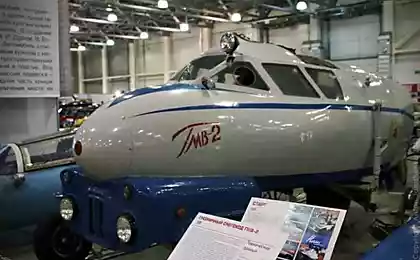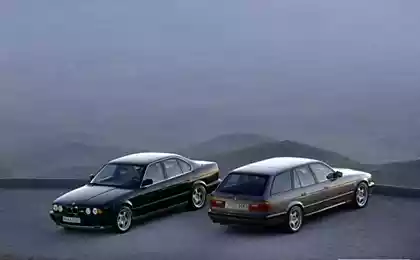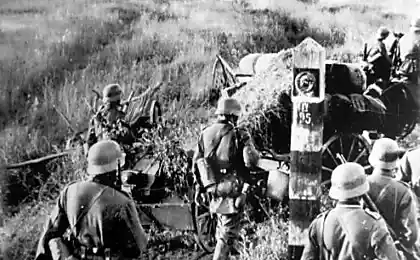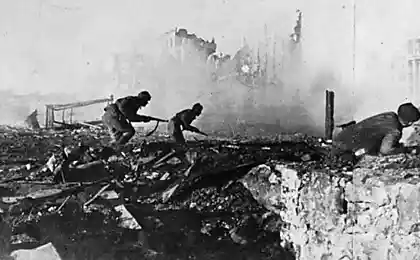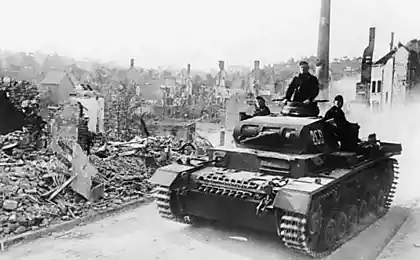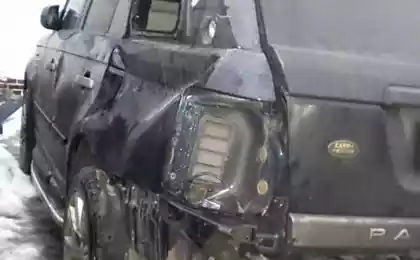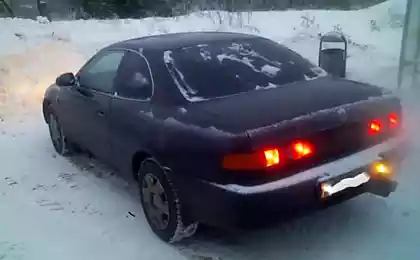888
German motorized wheelchairs.
Here in a glimpse of what the next topic read the opinion, that, say, our "Zaporozhets" will plunge into shock any foreigner, let alone a wheel microcar currently no bourgeois even in the worst predpohmelnom dream and to not be able to. Clean, they say, the Soviet theme. Here we look at what luxury limousines drove about war invalids and simple middle-class post-war period, say, in Germany. The material does not claim to encyclopedic and is a only a superficial overview of the most famous and interesting specimens. It will be 13 pictures from bukovkami.
Let's start with Messerschmitt.
In the early postwar years, the engineer Fritz Fend Aviation hunted production tricycle wheelchair with a manual drive, in 1948, adapted to the design of 38-cc motor of the moped, and then took over and completely new design, was originally designed as a motor. Now the two-wheel positioned in the front third, driving - back, open design equipped with an aluminum body on a steel frame and motorcycle engine hundred cubes and four and a half strength. Although the product, called Fend Flitzer, special poluchiloi Distribution - 252 cars were manufactured - that it attracted the attention of Willy Messerschmitt, who was looking for something to do idle production capacity ...
Fend Flitzer:
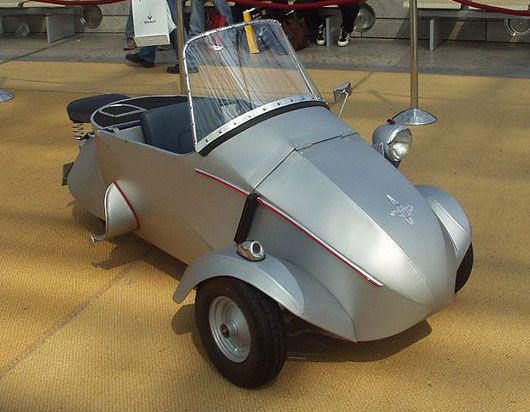
Hired Messerschmitt Fend design significantly altered - now it had to be microcar for disabled people, and a publicly available a vehicle for the ordinary citizen. Some may ask - and how "popular" a Volkswagen Beetle? I will answer. Messerschmitt, when he appeared, was worth two thousand marks Beetle - more than five. For most of the postwar population it was a very big difference. So, it became a two-seater vehicle, the rider placed one after the other, the driver and passenger. The engine grew to 150 prototypes, and the first production to 175 blocks, wheels, however, there were three. For landing, the landing served hinged Plexiglas cover, reminiscent of the airplane. It called all this Messerschmitt Kabinenroller - «scooter cab." The first production model, KR-175 single-cylinder engine with 175 blocks and 9 horsepower produced from March 1953 to March 1955, and was built of fifteen thousand. By the way, the whole nesmontrya seemingly frivolous, the maximum speed of this device was 90 km / h.
Messerschmitt KR-175:
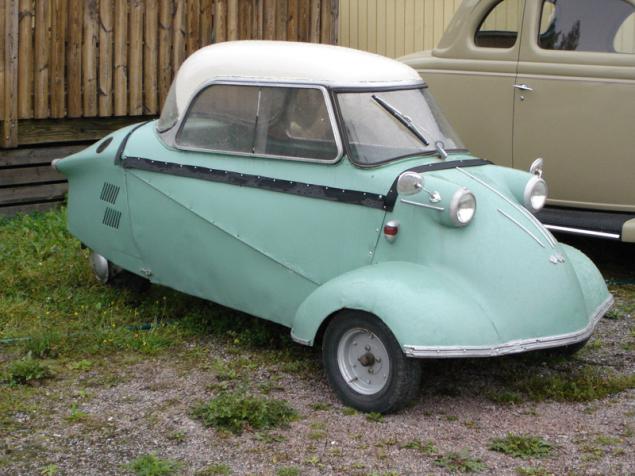
In the years 1955-56 was released thirty thousand more Kabinenrollerov KR-200, distinguished mainly by 190-cc 10-hp motor, and then returned to the Messerschmitt aircraft manufacturing, production is sold kabinenrollerov organized for this purpose by the same company Fendi FMR, which produced 200 th until 1964 ...
Messerschmitt KR-200:
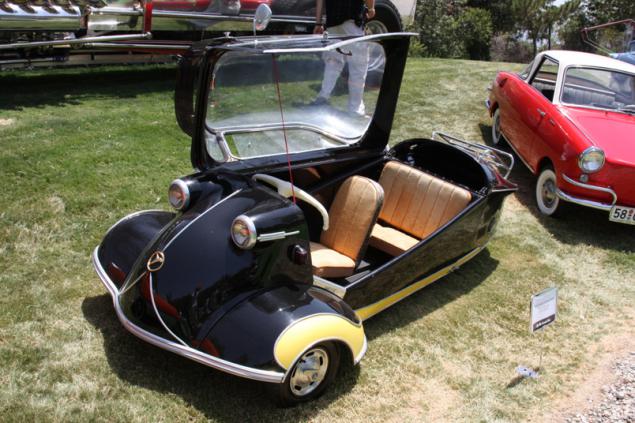
Fend also continued to improve the design, along with the release of the old model. The climax, so to speak, was the creation of the ego was released a few hundred copies in the years 1959-61 four-wheel FMR Tg500, with a two-cylinder engine develops dvadtsatisilnym about 130 km / h and is already costing as a normal car ...
FMR Tg500:
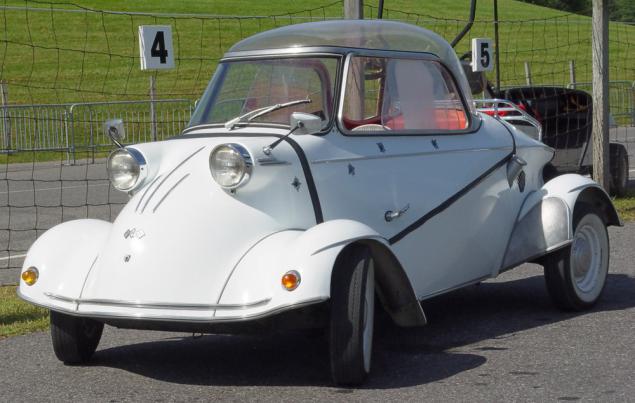
Another German aircraft manufacturer, Dornier, in 1956, created his prototype microcar Delta, Quadruple. The seats are arranged back to back, and two doors - the front and rear walls of the body:
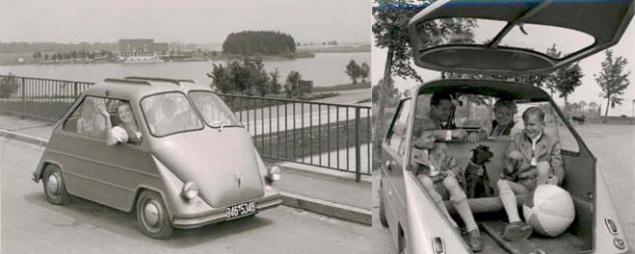
Himself Dornier Delta has remained a prototype, but the design was bought by motorcycle manufacturer Zundapp and after some improvements in the year 1957-58 was released almost ten thousand that's just such machines Zundapp Janus:

BMW by this time and was on the verge of bankruptcy with its wonderful on all sides, but at their price, very few people want a country in post-war eight-cylinder engines the five hundredth series. Therefore, having no experience in the development of this class of car, the leadership of BMW bought the license for the Italian company microcar ISO, and further developed and motorcycle engines equipping its own production in 1955 has launched its own microcar - famous Izetta. The first model, BMW Isetta 250, was equipped with a 250 cc engine 12 forces the drive to wheels supplied almost close to each other in order to get rid of the differential. From 1955 to 1962 it produced 26 and a half thousand cars and 15 thousand more "three hundred", with increased engine. About Izetta I can write a lot individually, so there is force myself to confine such general terms.
BMW Isetta:
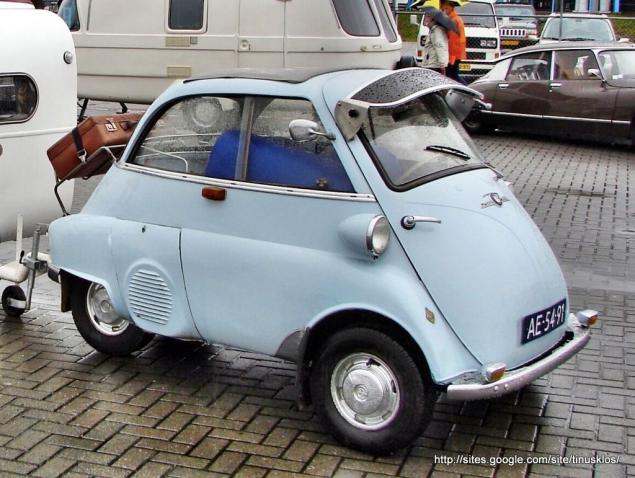
Heir Izetta was the BMW 600 - a solid, four-bed design with 600-cc motorcycle engine in the 26 forces. Releasing in 1957-59, 35, 000 such cars, BMW has created still more minicar automobile type, BMW 700, but in this subject it is not the place.
BMW 600:
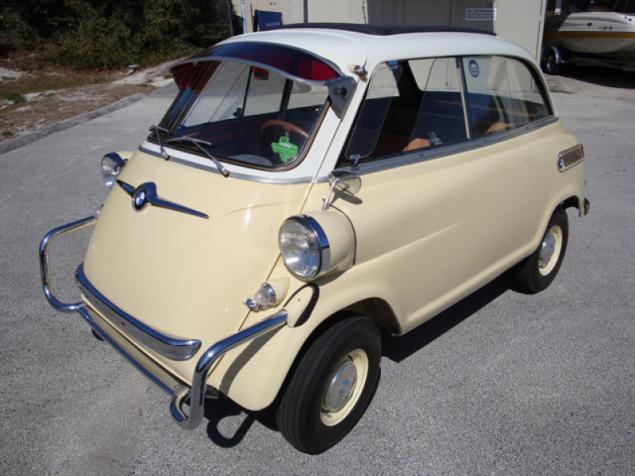
Even more outlets were products of the company Hans Glas - Glas Goggomobil. From 1955 to 1969 zadnemotornyh sedanchikov Goggomobil T 250, 300 and 400 cc motorchikami 13, 15 and 18 forces was made 214,000.
Glas Goggomobil T:
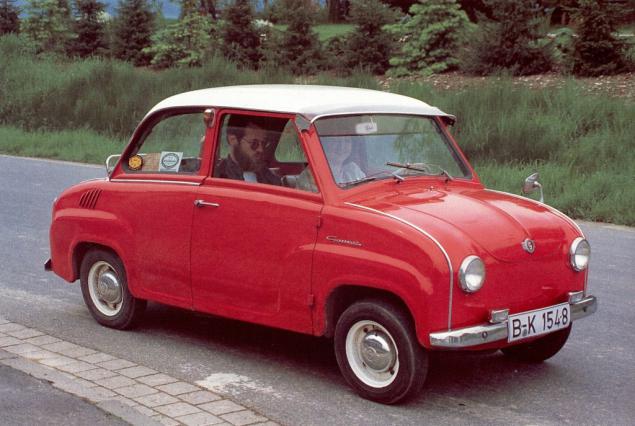
In addition, here are produced sports coupe Goggomobil TS - 66, 500 pieces:
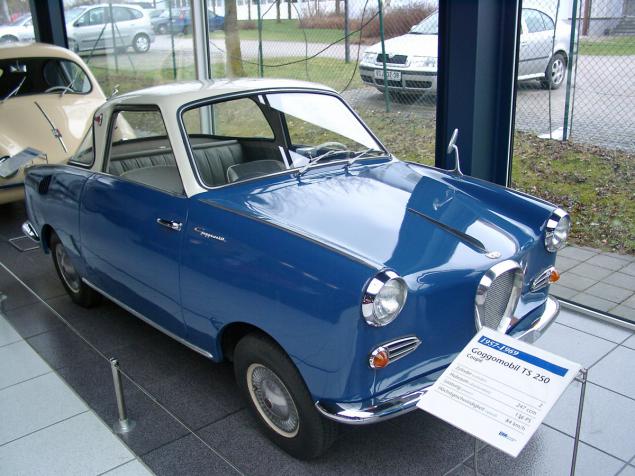
And three and a half thousand delivery van Goggomobil TL:
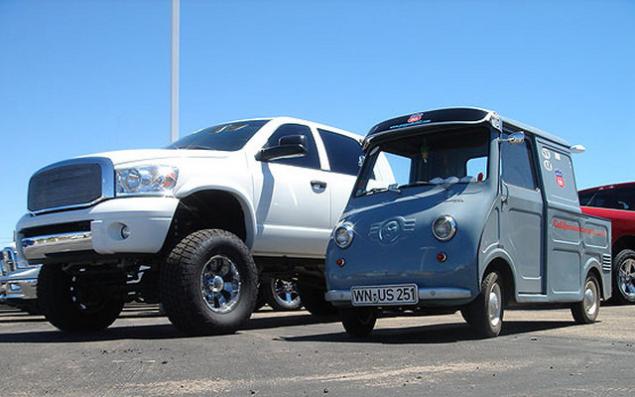
But this car for its plywood - rag body, has received a nickname Leukoplastbomber - bomber of plaster Lloyd LP250 / 300/400/600 series engines produced increases in the years 1950-61, the total circulation - over three hundred thousand copies.
Lloyd LP300:
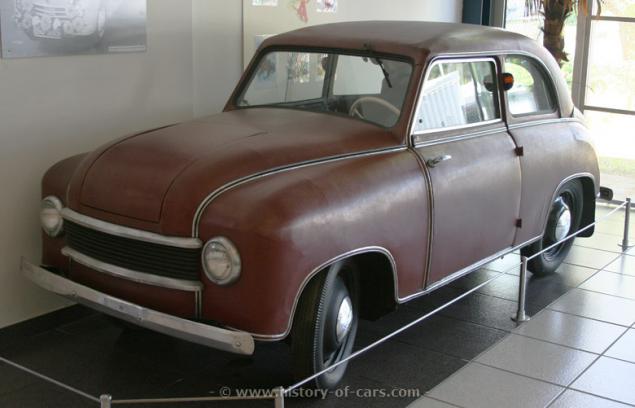
And finally, the third microcars with aviation roots. Heinkel Kabine 1956-58 was a creative rethinking Izetta, made in a small five thousand copies.
It was a brief and superficial review of the little German car fifties. It did not get any BMW-700 or NSU Prinz, who can be compared with Zaporozhets, nor quite so limited-edition and little-known cycle-that I post this I will add later.
So, do not scare any German invalidkoy
I have for now.
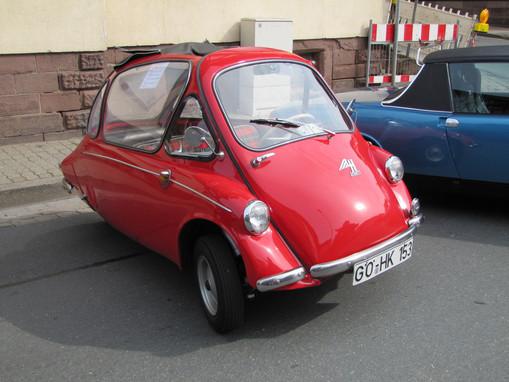
Source:
Let's start with Messerschmitt.
In the early postwar years, the engineer Fritz Fend Aviation hunted production tricycle wheelchair with a manual drive, in 1948, adapted to the design of 38-cc motor of the moped, and then took over and completely new design, was originally designed as a motor. Now the two-wheel positioned in the front third, driving - back, open design equipped with an aluminum body on a steel frame and motorcycle engine hundred cubes and four and a half strength. Although the product, called Fend Flitzer, special poluchiloi Distribution - 252 cars were manufactured - that it attracted the attention of Willy Messerschmitt, who was looking for something to do idle production capacity ...
Fend Flitzer:

Hired Messerschmitt Fend design significantly altered - now it had to be microcar for disabled people, and a publicly available a vehicle for the ordinary citizen. Some may ask - and how "popular" a Volkswagen Beetle? I will answer. Messerschmitt, when he appeared, was worth two thousand marks Beetle - more than five. For most of the postwar population it was a very big difference. So, it became a two-seater vehicle, the rider placed one after the other, the driver and passenger. The engine grew to 150 prototypes, and the first production to 175 blocks, wheels, however, there were three. For landing, the landing served hinged Plexiglas cover, reminiscent of the airplane. It called all this Messerschmitt Kabinenroller - «scooter cab." The first production model, KR-175 single-cylinder engine with 175 blocks and 9 horsepower produced from March 1953 to March 1955, and was built of fifteen thousand. By the way, the whole nesmontrya seemingly frivolous, the maximum speed of this device was 90 km / h.
Messerschmitt KR-175:

In the years 1955-56 was released thirty thousand more Kabinenrollerov KR-200, distinguished mainly by 190-cc 10-hp motor, and then returned to the Messerschmitt aircraft manufacturing, production is sold kabinenrollerov organized for this purpose by the same company Fendi FMR, which produced 200 th until 1964 ...
Messerschmitt KR-200:

Fend also continued to improve the design, along with the release of the old model. The climax, so to speak, was the creation of the ego was released a few hundred copies in the years 1959-61 four-wheel FMR Tg500, with a two-cylinder engine develops dvadtsatisilnym about 130 km / h and is already costing as a normal car ...
FMR Tg500:

Another German aircraft manufacturer, Dornier, in 1956, created his prototype microcar Delta, Quadruple. The seats are arranged back to back, and two doors - the front and rear walls of the body:

Himself Dornier Delta has remained a prototype, but the design was bought by motorcycle manufacturer Zundapp and after some improvements in the year 1957-58 was released almost ten thousand that's just such machines Zundapp Janus:

BMW by this time and was on the verge of bankruptcy with its wonderful on all sides, but at their price, very few people want a country in post-war eight-cylinder engines the five hundredth series. Therefore, having no experience in the development of this class of car, the leadership of BMW bought the license for the Italian company microcar ISO, and further developed and motorcycle engines equipping its own production in 1955 has launched its own microcar - famous Izetta. The first model, BMW Isetta 250, was equipped with a 250 cc engine 12 forces the drive to wheels supplied almost close to each other in order to get rid of the differential. From 1955 to 1962 it produced 26 and a half thousand cars and 15 thousand more "three hundred", with increased engine. About Izetta I can write a lot individually, so there is force myself to confine such general terms.
BMW Isetta:

Heir Izetta was the BMW 600 - a solid, four-bed design with 600-cc motorcycle engine in the 26 forces. Releasing in 1957-59, 35, 000 such cars, BMW has created still more minicar automobile type, BMW 700, but in this subject it is not the place.
BMW 600:

Even more outlets were products of the company Hans Glas - Glas Goggomobil. From 1955 to 1969 zadnemotornyh sedanchikov Goggomobil T 250, 300 and 400 cc motorchikami 13, 15 and 18 forces was made 214,000.
Glas Goggomobil T:

In addition, here are produced sports coupe Goggomobil TS - 66, 500 pieces:

And three and a half thousand delivery van Goggomobil TL:

But this car for its plywood - rag body, has received a nickname Leukoplastbomber - bomber of plaster Lloyd LP250 / 300/400/600 series engines produced increases in the years 1950-61, the total circulation - over three hundred thousand copies.
Lloyd LP300:

And finally, the third microcars with aviation roots. Heinkel Kabine 1956-58 was a creative rethinking Izetta, made in a small five thousand copies.
It was a brief and superficial review of the little German car fifties. It did not get any BMW-700 or NSU Prinz, who can be compared with Zaporozhets, nor quite so limited-edition and little-known cycle-that I post this I will add later.
So, do not scare any German invalidkoy
I have for now.

Source:

